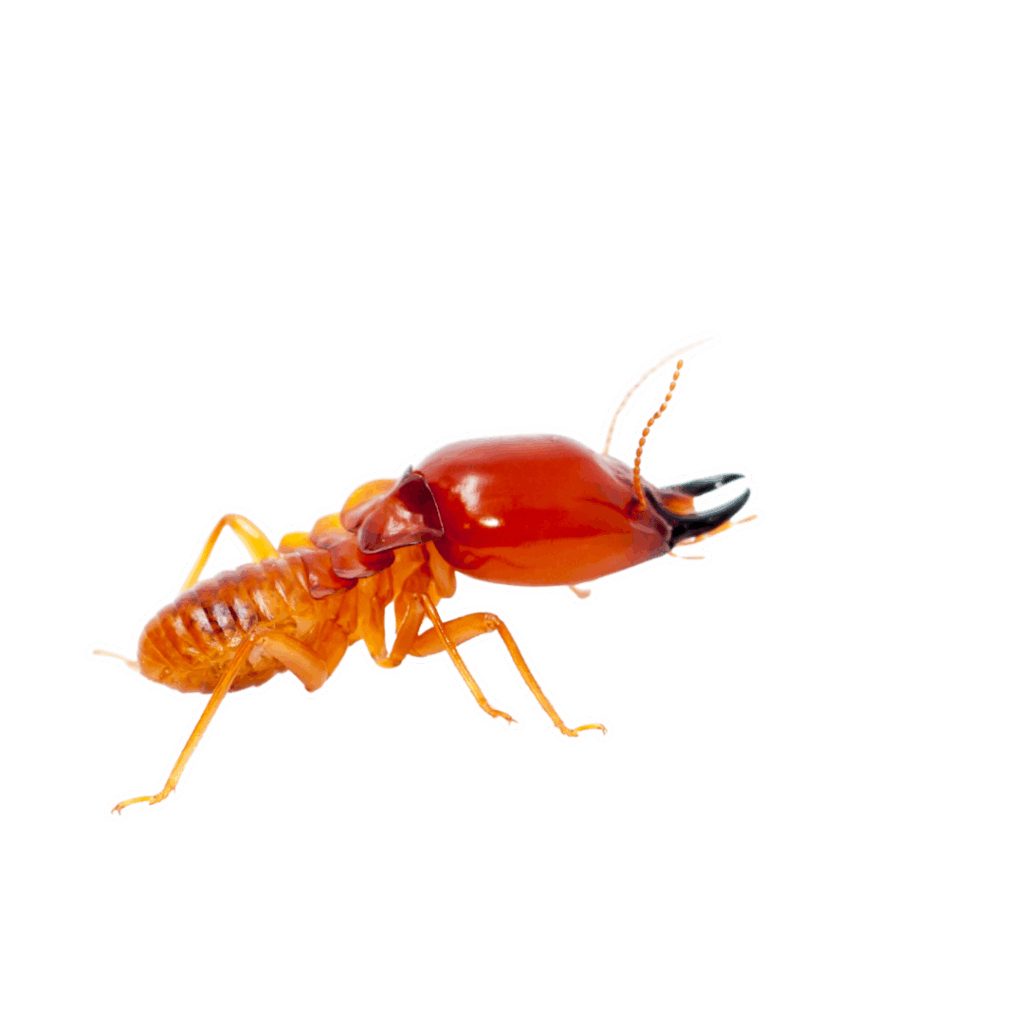- Home
- Pest Control
- Insects
- Termites
Trusted Termite Control and Protection
Termites cause billions of dollars in damage every year, often before homeowners even realize they’re there.
How Do You Protect Your Home from Termites?
Termites are known as the “silent destroyers” because they feed 24/7 on the cellulose in wood and paper products, often going undetected until major structural damage occurs. Subterranean termites are especially destructive in Southern California, with powerful jaws that can chew through wood one tiny piece at a time. Over time, their constant feeding can compromise your home’s foundation, walls, and framing—resulting in thousands of dollars in repairs. Early detection and professional termite control are essential to protect your property and avoid costly damage.
The first warning signs often appear in spring, when winged termite swarmers search for new nesting sites, especially in homes with moisture damage. Other common signs include mud tubes along walls, hollow-sounding wood, bubbling paint, or discarded wings near windows and doors. If you spot these indicators, it’s important to act quickly. Professional treatments like trench and treat, foam injections, or fumigation eliminate active infestations and create a protective barrier against future termite activity, keeping your home safe year-round.
- Subterranean termite treatment
- Drywood termite solutions
- Termite monitoring stations
- Preventative barrier protection
The Latest.
Radioactive wasp nests have been found near former nuclear weapons production site…

Testimonial
Here’s what our pest control customers say
From ant invasions to termite troubles, our customers trust us to protect their homes and families. Here’s what they have to say about our safe, effective, and reliable pest control services.
Why Choose Us
Experienced pest management backed by strong values.
At Innovative Pest Solutions, we believe excellence starts with values. Guided by servant leadership, decades of experience, and certified training, we deliver safe, effective, and environmentally responsible pest management for homes and industries.
Faith & Integrity
We lead with Christian values and servant leadership—treating every client with honesty, respect, and care.
Health & Protection
Our services safeguard public health by preventing pests that spread asthma triggers and diseases like Typhoid and West Nile virus.
Team & Family
We foster a culture of teamwork, quality, and balance—treating every property like our own and supporting our people like family.
Certified Expertise
Over 60 years of combined experience and full regulatory certifications ensure safe, proven solutions for any pest challenge.
Tell Me About Termite Behavior
What Should You Know About Termite Behavior?
Termites are social insects that live in large colonies and feed nonstop on cellulose, the main component of wood and other plant materials. Subterranean termites build mud tubes to travel between their underground nests and food sources, while drywood termites live directly inside wooden structures. Both types can remain hidden for months or even years, silently weakening a home from the inside out. Because termites work around the clock and reproduce quickly, a small colony can grow into a massive infestation capable of causing extensive structural damage. Understanding their behavior is key to spotting early warning signs and protecting your property before serious problems occur.

Common Questions
Frequently Asked Questions
Termite Control FAQs
Common signs include mud tubes on walls or foundations, hollow-sounding wood, discarded wings near windows, bubbling or cracked paint, and small piles of what looks like sawdust (termite droppings).
Yes. Termites feed on wood 24/7 and can cause thousands of dollars in structural damage. Left untreated, a large colony can compromise the safety of an entire home within just a few years.
The two most common types are Subterranean termites, which build mud tubes and are highly destructive, and Drywood termites, which live directly inside wood and often infest attics, decks, and furniture.
Termites have straight antennae, equal-length wings, and thick waists, while ants have elbowed antennae, uneven wing lengths, and narrow waists. Because they look similar, a professional inspection is often necessary.
Professional termite treatments such as trench and treat, foam injections, fumigation, and monitoring stations are the most effective methods. These eliminate active infestations and create long-term protection against future termite damage.
